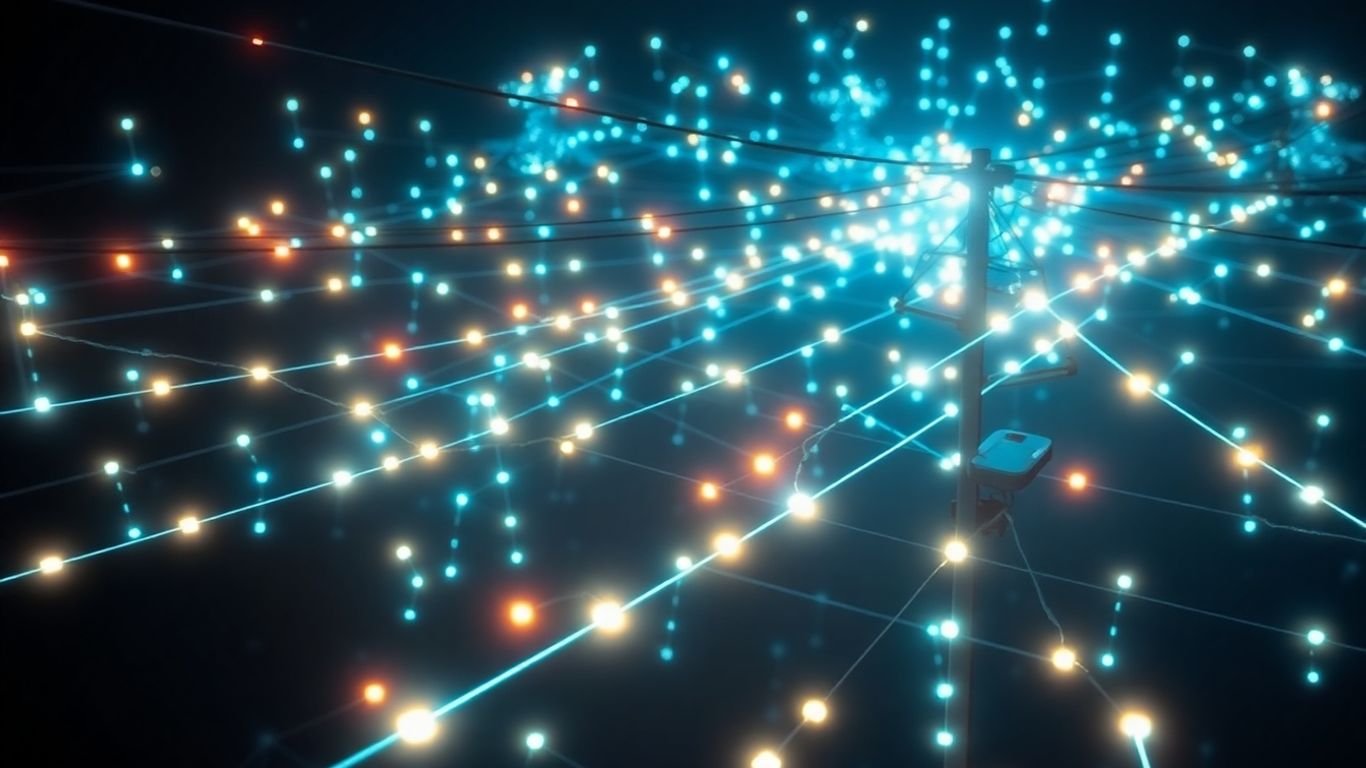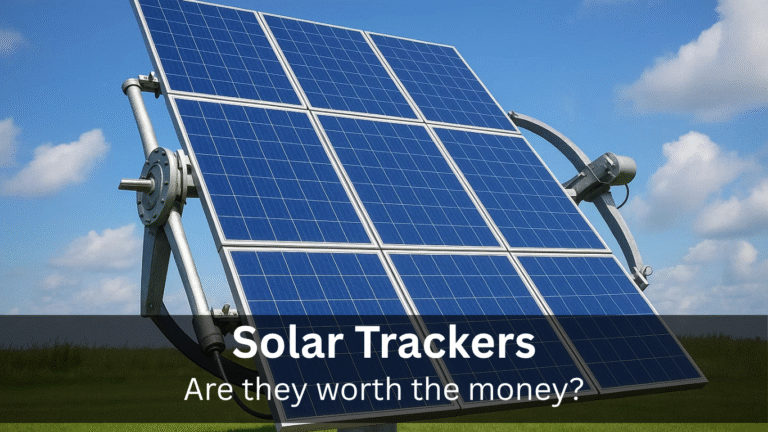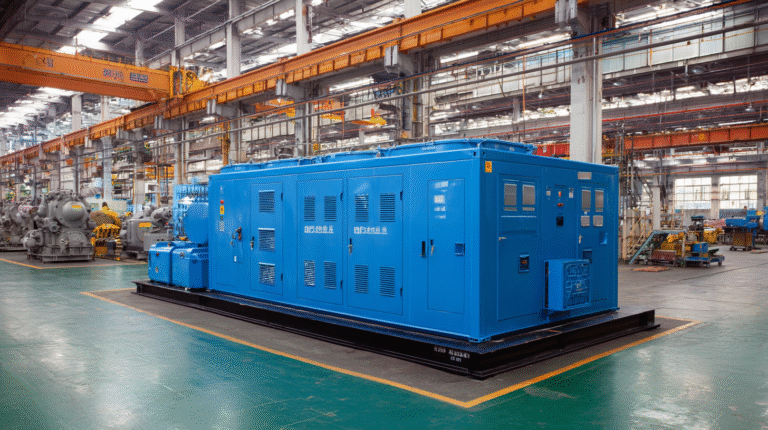The Essential Role of the Microgrid Controller in Modern Energy Systems
So, microgrids are kind of a big deal these days in how we get our power. Think of them as smaller, smarter versions of the main power grid. They can work on their own or hook up with the bigger grid when needed. The real brains behind all of this? That’s the microgrid controller. It’s like the conductor of an orchestra, making sure all the different parts of the microgrid work together smoothly. Without a good controller, a microgrid just wouldn’t function properly, especially when things get tricky.
Key Takeaways
- A microgrid controller keeps an eye on and manages all the energy sources and demands within the microgrid. This includes things like solar panels, batteries, and even the appliances that use power.
- It’s responsible for keeping the power flow steady and balanced, making sure there’s enough electricity for everyone and everything that needs it, all the time.
- When the main power grid goes down, the microgrid controller can quickly switch the microgrid to operate on its own, keeping power flowing to important places like hospitals or data centers.
- Advanced controllers can figure out the cheapest way to get power, using different sources at different times to save money, especially by managing when power is used.
- Security is a big part of it too. The microgrid controller has to protect the system from cyber threats and keep records of what’s happening, while still allowing people to step in if they need to.
Understanding The Microgrid Controller’s Core Functions

Think of a microgrid controller as the brain of a microgrid. It’s the central piece that keeps everything running smoothly, making sure power gets where it needs to go, when it needs to go there. Without it, a microgrid would just be a collection of energy sources and loads, not a coordinated system. This controller is what allows a microgrid to act as a single, manageable unit, whether it’s connected to the main power grid or operating on its own. It’s the conductor of the energy orchestra, so to speak.
Monitoring And Controlling Energy Resources
The controller is constantly watching all the different parts of the microgrid. This includes things like solar panels, battery storage, generators, and even the actual electricity users (loads). It gathers data from all these components in real-time. Based on this information, it makes decisions about how to best use the available energy. For example, if the sun is shining and batteries are full, it might direct more power to the loads or even send excess back to the main grid. It’s all about making smart choices to keep things efficient.
Ensuring Grid Stability And Load Balancing
Keeping the power supply steady and balanced is a big job. The controller works to match the amount of electricity being generated with the amount being used at any given moment. This prevents fluctuations in voltage and frequency, which can cause problems for sensitive equipment. It’s like balancing a scale; if one side gets too heavy, the controller adjusts the other side to keep it even. This is especially important when different energy sources are coming online and offline, or when demand suddenly spikes.
Facilitating Seamless Islanding Capabilities
One of the most impressive features of a microgrid is its ability to disconnect from the main power grid and operate independently, a process called ‘islanding’. The controller is the key to making this switch happen without interruption. When the main grid goes down, the controller quickly detects the problem and tells the microgrid to go it alone. It then takes over full control, managing all local resources to keep power flowing to critical loads. This ability is what makes microgrids so valuable for places that absolutely cannot afford to lose power, like hospitals or data centers. You can find out more about what a microgrid is here.
Here’s a quick look at what the controller manages:
- Energy Sources: Solar panels, wind turbines, generators, battery storage.
- Energy Loads: Buildings, homes, industrial equipment.
- Grid Connection: The link to the main utility power.
The controller’s primary goal is to maintain a stable and reliable power supply for all connected loads, optimizing resource use and cost-effectiveness while adapting to changing conditions.
Key Capabilities Of An Advanced Microgrid Controller
So, what makes a microgrid controller truly advanced? It’s not just about turning things on and off. These controllers are the brains behind the operation, making sure everything runs smoothly, especially when things get a bit chaotic. They’re designed to handle a lot, integrating all sorts of power sources and making smart decisions on the fly.
Integrating Diverse Distributed Energy Resources
Think of your microgrid as a team. You’ve got solar panels, maybe some wind turbines, battery storage, and perhaps even a generator. An advanced controller knows how to talk to all of them, no matter their make or model. It can bring new resources online as you add them, making the whole system more flexible. This ability to mix and match different energy sources is key to building a robust energy system, like the ones being developed in the Next-Gen Energy Matrix [38f0]. It means you’re not reliant on just one type of power.
Optimizing Energy Costs Through Demand Response
Nobody likes high electricity bills, right? Advanced controllers help keep those costs down. They can participate in demand response programs, which basically means they can adjust power usage based on signals from the utility. If electricity prices are high, the controller might decide to use stored energy or ramp up local generation instead of buying expensive power from the main grid. It’s all about smart timing and using the cheapest available power at any given moment.
Guaranteeing Continuity For Critical Loads
For places like hospitals, data centers, or emergency services, losing power isn’t an option. An advanced microgrid controller is programmed to protect these critical loads. If the main grid goes down, or even if there’s a problem within the microgrid itself, the controller can quickly isolate the critical loads and make sure they keep getting power from the available resources. It’s like having a dedicated backup plan that kicks in automatically, without anyone needing to flip a switch.
The controller’s ability to manage various energy inputs and outputs in real-time is what makes a microgrid resilient. It’s constantly assessing the situation and making adjustments to keep the lights on and essential services running, even when the main grid is struggling.
The Microgrid Controller’s Role In Energy Management
When we talk about managing energy in a microgrid, the controller is really the brain of the operation. It’s not just about turning things on and off; it’s about making smart decisions in real-time to keep everything running smoothly and efficiently. Think of it as the conductor of an orchestra, making sure every instrument plays its part at the right time.
Real-Time Power Management Systems
This is where the controller shines. It’s constantly watching how much power is being generated from sources like solar panels or batteries, and how much is needed by the loads connected to the microgrid. It makes split-second adjustments to balance supply and demand. This constant monitoring and adjustment is key to preventing power quality issues and keeping the system stable. It’s like a chef constantly tasting and adjusting a sauce to get the flavor just right.
Energy Planning And Predictive Analytics
Beyond the immediate moment, the controller also looks ahead. It uses historical data and forecasts for things like weather and energy prices to plan energy use. This means it can decide, for example, to charge batteries when electricity is cheap and discharge them when it’s expensive. This predictive capability is what helps to significantly cut down on overall energy costs. It’s about being proactive, not just reactive.
Adapting To Changing Energy Storage Needs
Energy storage is a big part of any microgrid, and its needs can change. Maybe you add more solar panels, or perhaps the way you use energy shifts. The controller needs to be flexible enough to adapt its strategy for charging and discharging batteries based on these new conditions. It needs to figure out the best way to use that stored energy, whether it’s for backup during an outage or to save money during peak hours. This adaptability is what makes a microgrid truly resilient and cost-effective over the long haul. For more on how these systems work, check out mobile microgrids.
The controller’s ability to manage energy in real-time, plan for the future, and adapt to changes is what makes a microgrid a smart and reliable energy solution.
Enhancing Resilience With A Smart Microgrid Controller
When the main power grid goes down, whether it’s due to a storm, equipment failure, or something else entirely, a microgrid controller is what keeps the lights on for critical facilities. It’s like having a backup plan that actually works, automatically.
Autonomous Operation During Grid Disruptions
This is where the microgrid controller really shines. When it senses that the main grid is no longer providing power, it doesn’t just sit there. It makes a decision, and it makes it fast. The controller can disconnect from the main grid – a process called islanding – and start managing the local energy resources. This means generators, batteries, and solar panels all kick into action, coordinated by the controller, to keep power flowing to the loads that need it most. It’s all about keeping essential services running without missing a beat.
Contingency Event Reconfiguration
Things don’t always go perfectly, even within a microgrid. If one of the local energy sources has a problem, or if a particular load suddenly needs a lot more power, the controller can adjust on the fly. It can re-route power, bring online extra generation, or even shed non-essential loads to make sure the critical ones stay powered. This ability to reconfigure itself based on changing circumstances is key to maintaining stability when unexpected events happen.
Maintaining Power During Natural Disasters
Natural disasters are a major reason why microgrids are so important. Think about hospitals, emergency response centers, or data centers that absolutely cannot afford to lose power. A smart microgrid controller allows these facilities to keep operating even when the wider grid is completely out of commission. It prioritizes power to these vital locations, using whatever local resources are available. This capability is a game-changer for community safety and continuity during emergencies.
Here’s a look at how a controller manages power during a disruption:
- Detection: Senses loss of connection to the main grid.
- Islanding: Safely disconnects from the main grid.
- Resource Activation: Commands local generators, batteries, and renewables to start producing power.
- Load Management: Balances power supply with demand, prioritizing critical loads.
- Reconnection: Monitors the main grid and reconnects when stable power is available.
The controller acts as the brain of the microgrid, making rapid, intelligent decisions to keep power flowing when it’s needed most. This autonomous capability is what makes microgrids so reliable in challenging situations.
Security And Communication In Microgrid Control

When we talk about microgrids, it’s not just about generating and distributing power; it’s also about keeping that whole system safe and connected. Think of the microgrid controller as the brain, and for any brain to work right, it needs good communication lines and protection. Without solid security and communication, even the smartest microgrid can become a weak link.
Configurable Cybersecurity Measures
Keeping a microgrid secure is a big deal. It’s not a one-size-fits-all situation, which is why controllers need to be flexible. You can set up different security rules depending on what’s most important for that specific microgrid. This means things like making sure only authorized devices can talk to the controller, or scrambling the data so no one can read it if they intercept it. It’s about building layers of defense to stop unwanted access or interference.
System Status History And Reporting
Knowing what’s happening, and what has happened, is key. The controller keeps a log of everything – how much power was generated, when loads were switched, and any alerts that popped up. This history is super useful for figuring out why something went wrong, or just for understanding how the system is performing over time. It’s like a detailed diary for your energy system.
Here’s a look at what kind of data might be logged:
- Timestamp of event
- Type of event (e.g., generation, load change, fault)
- Affected component (e.g., solar array, battery, specific load)
- Power flow (kW, kVA)
- Voltage and frequency readings
- Alarm or status code
Personnel Intervention Capabilities
Even with all the automation, sometimes a human needs to step in. The controller needs to allow trained operators to take manual control if something unexpected happens or if they need to perform maintenance. This isn’t about letting just anyone mess with the system; it’s about having a clear, secure way for qualified people to override automated functions when necessary. This balance between autonomy and human oversight is critical for safe and effective microgrid operation.
The Economic Advantages Driven By Microgrid Controllers
Microgrid controllers are pretty neat when you think about the money they can save. They’re not just about keeping the lights on during a blackout; they’re also smart about how energy is bought and used. This intelligent management can lead to significant cost reductions for businesses and communities.
Reducing Utility Costs With Time-Of-Use Tariffs
Utility companies often charge different prices for electricity depending on the time of day. This is called Time-of-Use (TOU) pricing. Peak hours, when everyone is using a lot of power, are usually the most expensive. A microgrid controller can track these price changes. It can then decide to use stored energy from batteries or generate its own power when grid electricity is cheapest. This means less reliance on expensive peak-hour power from the main utility.
Here’s a simplified look at how it works:
- Monitor Grid Prices: The controller constantly checks the utility’s electricity rates.
- Manage Stored Energy: It uses battery power when grid prices are high.
- Optimize Generation: It can fire up on-site generators or solar power when it’s more cost-effective than buying from the grid.
- Shift Loads: If possible, it can delay non-essential energy use until prices drop.
Minimizing Peak Demand Charges
Beyond just the price per kilowatt-hour, many commercial utility bills include a
Wrapping It Up: The Microgrid Controller’s Big Job
So, as we’ve seen, microgrids are really changing how we think about power. They’re not just some futuristic idea anymore; they’re here, making our energy more reliable and cleaner. And at the heart of all this is the microgrid controller. It’s like the brain of the operation, making sure everything runs smoothly, whether it’s handling solar power, batteries, or even backup generators.
It keeps the lights on when the main grid goes down, helps save money by managing energy use smartly, and can even grow as we add more energy sources. Without a good controller, a microgrid just wouldn’t work the way it’s supposed to. It’s the piece that ties it all together, making these smaller grids a really important part of our energy future.
Frequently Asked Questions
What is a microgrid controller and what does it do?
Think of a microgrid controller as the brain of a microgrid. It’s a smart device that watches over all the energy sources, like solar panels or batteries, and makes sure everything runs smoothly. It tells the energy sources when to turn on or off, keeps the power steady, and makes sure there’s enough electricity for everyone using it. It’s like a traffic cop for energy, directing it where it’s needed most.
Can a microgrid keep the lights on when the main power goes out?
Yes, absolutely! That’s one of the main reasons microgrids are so important. If the big power grid fails, the microgrid controller can quickly disconnect from it and keep running on its own using its local energy sources. This is called ‘islanding,’ and it’s super helpful for places like hospitals or data centers that need power no matter what.
How does a microgrid controller help save money?
Microgrid controllers are clever with money. They can look at the electricity prices from the main grid and decide the cheapest way to get power. If electricity is cheap, they might buy it from the main grid. If it’s expensive, they’ll use the microgrid’s own energy sources, like solar power or stored energy in batteries, to save money. They also help reduce high charges for using a lot of power at once.
What kind of energy sources can a microgrid controller manage?
A microgrid controller is pretty versatile. It can handle all sorts of energy sources. This includes things like solar panels, wind turbines, battery storage systems, and even generators that run on things like natural gas or fuel cells. As new energy technologies come along, the controller can usually be updated to manage them too.
Is a microgrid safe from hackers?
Keeping the microgrid safe is a big deal. The controller has built-in security features, like special codes and ways to keep communication private, to protect it from cyber threats. It also keeps records of what’s happening, so if something does go wrong, people can figure out what happened and fix it. Plus, trained people can still step in to manage things if needed.
Why are microgrids becoming more popular?
Microgrids are becoming more popular because they offer a more reliable and cleaner way to get electricity. They can keep power flowing even when the main grid has problems, which is great for important places. They also use more renewable energy, like solar and wind, which is better for the environment. Basically, they make our energy supply more dependable and greener.







